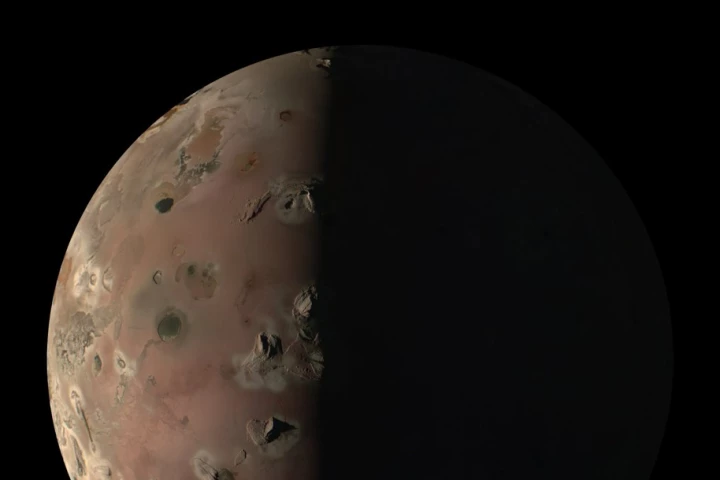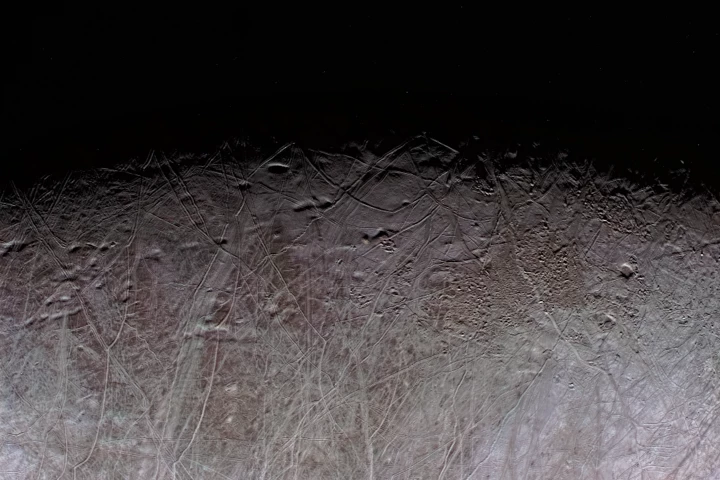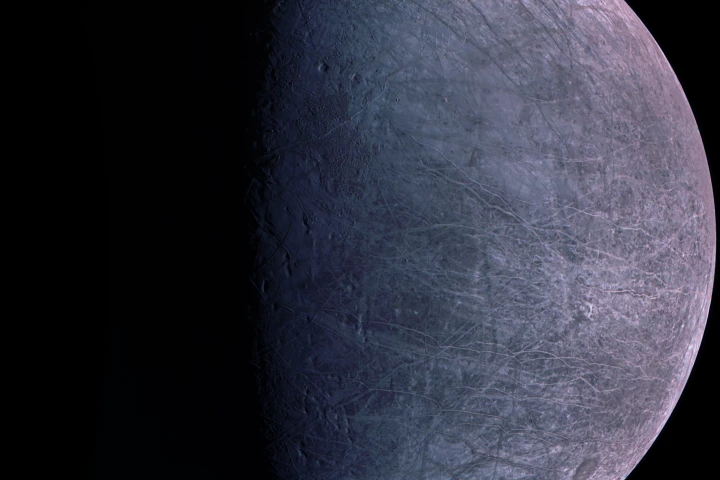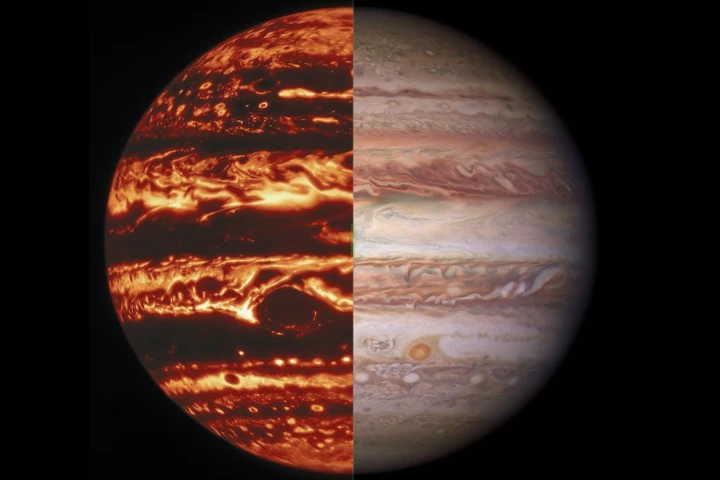Juno
-
Data from NASA's Juno Jupiter orbiter suggests that the Jovian moon Europa produces about 26 lb/s (12 kg/s) of oxygen or almost 100 times less than previously estimated. This changes the probability of life being found in the moon's subterranean ocean.
-
NASA has released a high-resolution image taken by the Juno deep space probe during its close encounter with Jupiter's moon Io on December 30, 2023. The image of the volcanic satellite not only shows remarkable details, but an unusual kind of lighting.
-
On December 30, 2023, NASA's Juno deep space probe made the closest flyby of Jupiter's moon Io in over two decades. The robotic spacecraft passed within 930 miles (1,500 km) of the volcanic satellite, returning closeup images of the south pole.
-
NASA's Juno deep space probe has made its closest flyby yet of Jupiter's volatile moon Io. During its 51st orbit of the giant planet, the solar-powered robotic spacecraft came within 22,600 miles (35,500 km) of Io's volcanic surface.
-
In late September, NASA’s Juno probe swept by the Jovian moon Europa in the closest flyby for decades. A new image has now landed from this encounter that presents its fractured, icy crust in ultra-high resolution.
-
While NASA’s Juno spacecraft has captured some stunning imagery and compelling data on Jupiter since entering orbit around the gas giant in 2016, it’s not the only celestial body in the probe’s sights, now revealing more about its moon, Europa.
-
The latest data from NASA's pioneering Juno probe has offered the most complete picture of Jupiter's famously colorful and chaotic atmosphere yet, producing what scientists call the first 3D picture of the Jovian atmosphere.
-
NASA's Juno deep-space probe has sent back the first close-up images of Jupiter's largest moon, Ganymede, to be captured in two decades. The stunning images were taken by the JunoCam and Stellar Reference Unit during Juno's flyby of the moon on June 7.
-
Jupiter’s Great Red Spot may be stealing energy from the smaller storms that careen into it on a regular basis. These dramatic interactions had previously seemed to be damaging the iconic atmospheric feature, but may instead be helping it survive.
-
NASA’s Juno spacecraft will take a Cassini-like approach to exploring the Jovian system when it begins its latest mission extension in August this year at which point it will make passes of Jupiter’s rings and moons, and explore key surface features.
-
Space exploration in 2021 will see some major milestones to look forward to. From maiden flights to fiery endings, long-awaited launches to history-making first steps, here are some of the biggest upcoming events in space exploration this year.
-
Atmospheric phenomena known as "sprites" and "elves" may be illuminating the cloud layers of Jupiter, according to a newly published study. These short-lived light displays have been spotted on Earth manifesting above intense lightening storms.
Load More











